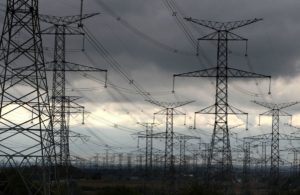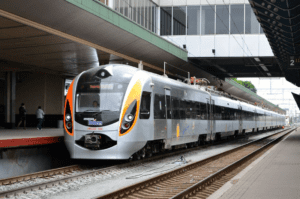
PJSC Farmak by the end of 2019 plans to bring its products to the U.S. market, CEO Volodymyr Kostiuk said at a press conference on Friday.
“The share of our exports in 2018 amounted to 25% of total sales. We exported products to different countries, in particular, to countries in Europe, Africa, Asia and Australia. This year we plan to enter the U.S. market,” he said.
Kostiuk also said that Farmak plans to cooperate with the European Bank for Reconstruction and Development (EBRD) and increase investment in the development of innovative technologies of the company.
“Last year we invested about UAH 700 million in laboratories, in the development of new medicines, in IT. This year we are doing everything to increase investment. In particular, we have planned to invest about $35 million in the development of the IT laboratory. We start a lot of new projects. We also plan to actively cooperate with the EBRD,” Kostiuk said.
According to him, the company plans to expand its product line.
“The company is actively developing its product line. Every year we produce up to 20 new products. This year we plan to release 23 new products,” Kostiuk said.
PJSC Farmak is among Ukraine’s top three pharmaceutical producers and is a member of the Association Manufacturers of Medications of Ukraine (AMMU).
PJSC Farmak’s beneficiary is Chairperson of PJSC Farmak’s supervisory board Filia Zhebrovska. She owns 80% of the company’s shares.
In 2017, Farmak increased sales in the country’s retail pharmaceutical market by 21% in monetary terms. Its net profit grew by 29.9%, to UAH 839.09 million.

Electricity exports operations, which volume grows by 15-25% every year since 2016, is beneficial for Ukraine, Energy and Coal Industry Minister of Ukraine Ihor Nasalyk said in the parliament on Friday.
He said that electricity is exported at the price formed on the domestic wholesale market and includes not only subsidy certificates (the sums that households do not pay due to the fact that tariffs are lower than the production cost), but also the investment element of all Ukrainian power companies.
“With exporting electricity we settle internal problems at the expense of external consumers,” the minister said.
As reported, in 2018, Ukraine exported electricity for $331.942 million, which is 41% more than a year ago.

Britain’s oil and gas company Regal Petroleum Plc with assets in Ukraine boosted average daily production in 2018 at the MekhediviskaGolotvshinska (MEX-GOL) and Svyrydivske (SV) gas and condensate fields (both are located in Poltava region) by 67% or 1,088 barrels of oil equivalent per day (boepd) compared with 2017, to 2,717 boepd.
According to a company press release, totally gas production at the two fields last year came to 341,216 cubic meters (a rise of 72.3% on 2017), and condensate production – 70 cubic meters (a rise of 48.9%) and LPG output – 36 cubic meters (a rise of 50%).
Average daily production at the Vasyschevskoye (VAS) gas and condensate field in Kharkiv region in 2018 grew by 11.2%, to 674 boepd. Average daily gas production rose by 10.1%, to 94,752 cubic meters and condensate – by 26.1%, to 8.2 cubic meters.
In Q4 2018, average daily production at the three fields totaled 4,139 boepd, which is 48% more than a year ago (2,803 boepd).
The company said that At the MEX-GOL field, preparations are continuing for the drilling of the MEX-119 well. At the VAS field, acquisition of additional 3D seismic is underway, to complete the acquisition of a field-wide 3D seismic data set.
Energees Management, part of Smart-Holding of Vadim Novinsky, holds 54% in Regal.

The Kyiv-Riga train launched by Ukrzaliznytsia, also passing through Minsk (Belarus) and Vilnius (Lithuania), from January 30, 2019 will make more trips – once in four days instead of once a week as it is done today, Ukrzaliznytsia Board Chairman Yevhen Kravtsov has written on his Facebook page.
“The occupancy rate from Kyiv to Riga is 49% and backwards – 40%. These are good figures, which are evidence of popularity of the train going to European capitals and its economic feasibility for the Ukrainian railways,” he said on Friday.
The weekly Kyiv-Minsk-Vilnius-Riga train was launched on September 28, 2018. At the end of Nov, Ukrzaliznytsia said that then the train was running at about zero cost effectiveness. However, given the “low season” and only the recent launch, Ukrzaliznytsia considered the launch of this train successful.
According to the company, after eight trips the train carried 2,100 passengers, of which 1,000 – to/from Lithuania and 950 – to/from Latvia.
In January, it is planned to hold talks with Estonian railways Eesti Raudtee on the extension of the train’s route to Tallinn.

Ukrainian hotels are not obliged to collect tourism fee from their clients until local authorities make a decision to approve the fee rates, Deputy Director of the Tax and Duties Department of the State Fiscal Service of Ukraine Stanislav Beskydevych has said. “The tourist fee is a local tax and is charged in accordance with the requirements of the Tax Code, but taking into account the decisions of local governments that implement the mandatory elements of the tax,” Beskydevych said at a roundtable in the parliamentary committee on family issues, youth policy, sports and tourism.
He recalled that the travel tax is charged in accordance with Article 268 of the Tax Code, which was amended at the end of 2018. In particular, the tax base has been changed, tax rates have been differentiated depending on the consumer category, and the possibility of an advance payment of the tax has been introduced.
At the same time, the taxman said that in order to implement the law, local authorities should set rates, determine the possibility of an advance payment or the absence of this possibility.
“While local councils have not established specific elements of the tax rate, in fact this tax is not paid, it is zero. We cannot collect tax without a decision of local councils,” Beskydevych said.
According to him, for its part, the State Fiscal Service must publish a modified form of tax declaration, which will be submitted in the first quarter of 2019.
“Today we have already developed draft changes. They are undergoing internal coordination. In the near future, they will be presented for public discussion, after which they will be sent to local self-government agencies,” Beskydevych said.

4G communication in the 1800 MHz band is currently available in 1,380 localities for at least 90% of their residents, the National Commission for Communications and Informatization Regulation (NCCR) has reported. In accordance with the list of localities provided to the NCCR by operators, 4G communications in Ukraine cover: 95 localities by Kyivstar, 1,099 localities by Vodafone Ukraine and 185 localities by lifecell. The lifecell’s press service told Interfax-Ukraine that they had submitted a list of localities with a population of more than 10,000 people to the regulator, in which at least 90% of the population is covered by 4G communication in the 1800 MHz band.
“In total, 4.5G-communication from lifecell in the 1800 MHz band is available in 5,082 settlements with different levels of population coverage,” the lifecell said, citing data as of January 11, 2019.
In turn, the press service of Kyivstar also reported that they submitted exclusively those settlements in which more than 10,000 people live.
“The company did not include localities in the rural areas and small cities with a population of less than 10,000, as these data were not requested by the regulator. As for the territory of the 4G communication network, Kyivstar now covers 3,619 populated localities,” the country’s largest mobile operator said.
Vodafone Ukraine told Interfax-Ukraine that as of January 17, 2019, 1,124 localities are connected to the 4G network, about 19 million Ukrainians live in them, but the company could not explain why the number of localities submitted to the regulator is different compared with its competitors.
Kyivstar and lifecell suggested that such a difference is due to the fact that only the towns with a population of over 10,000 were submitted, while Vodafone Ukraine presented all of the localities.
According to the regulator, mobile operators have already received more than 35,500 licenses to operate radio electronic equipment: more than 24,500for 3G/UMTS; more than 9,500 for 4G/LTE (the 1800 MHz band) and about 1,500 for 4G/LTE (the 2600 MHz band).
According to the licensing conditions, operators must ensure that 4G services can be received within 12 months for at least 90% of the population of each regional center of Ukraine, and within 42 months for at least 90% of the population of each locality with a population of more than 10,000 people except for regional centers and settlements located in the zone of environmental protection and on the areas annexed by Russia.